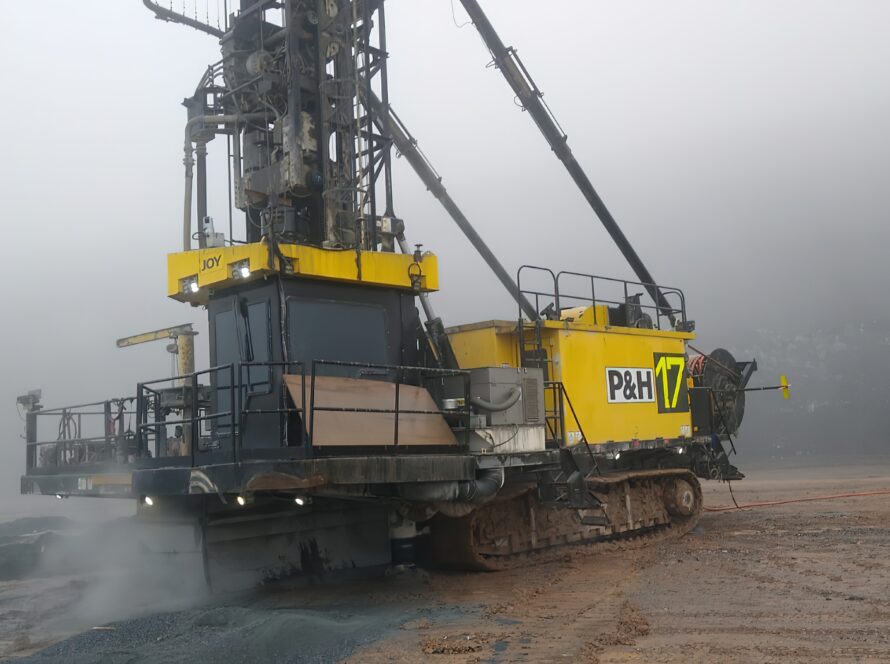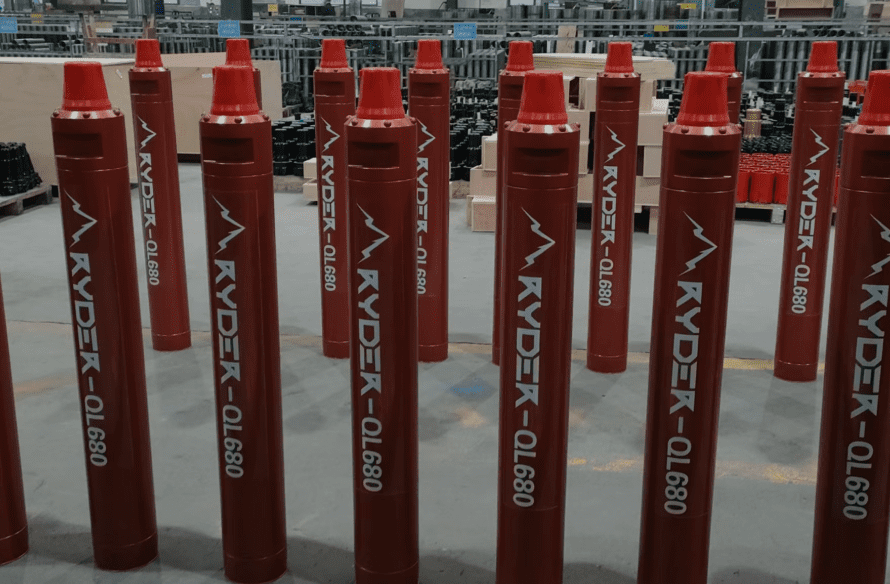Tricone bits are rotary drilling tools, which were created in 1910, although their massive use did not occur until the 1960s. This tool is used by a drilling machine to cut and crush (indentation) of the formations of the subsoil and that appear during the drilling process. Tricone bits have two characteristics:
- Clamping utilizes a rock mechanism, which is connected directly to the pipe.
- The tool has some “bearings” on which the drill cones go, places through which the drilling fluid passes continuously, which has the purpose of cleaning the bottom of the hole from the cuttings produced by the drilling operation, becoming this in the lubricant of the bearings.
Functioning
The operating process begins with the feed force produced by driving the buttons of the tricone bit into the rock. The thrust is transmitted through the linkage through a hydraulically actuated chain, which must not exceed the thrust threshold to avoid binding. The detritus sweeping is carried out using fluids contained in the soil (mud, water, compressed air), this sweep also serves as cooling and lubrication.
One of the purposes of the bit body shape is for the drilling fluid to arrive directly, which will do your cleaning job more efficiently. The work of the drill will depend on the type and characteristics of the rock to be cut, mainly as a function of hardness, a factor that is important for classifying the drill bits.
Ut perspiciatis, unde omnis iste natus error sit voluptatem accusantium doloremque laudantium, totam rem aperiam eaque ipsa, quae ab illo inventore veritatis et quasi architecto beatae vitae dicta sunt, explicabo.
Design of the cones
Drill bits are made up of cones, and their geometric angle is directly related to the hardness of the rock. The angle of the axis of the cone with the horizontal is proportional to the hardness of the rock, while the angle and diameter of the cone are opposite to the hardness of the rock.
Within the design of the cones, eccentricity also influences, this is usually higher in soft rocks and lower in rocks whose hardness is greater. As for the teeth and inserts, for hard rocks, these are usually short and close together; while for soft rocks, they are usually long and open.
Types of Tricone Drills
Among the different types of tricone bits are the following:
- Steel Teeth (ST): These bits are manufactured from alloy steel forgings with nickel, moly, and chromium. Drill bits with steel teeth are cheaper; when used properly they can pierce for several hours and are designed to work in the soft, medium, and hard formations.
- Tungsten Carbide Inserted Teeth (TCI): In these drills the manufacturer inserts hard tungsten carbide inserts, applying pressure into holes drilled in the cone of the drill. Its useful life is longer because tungsten carbide is more resistant to wear during drilling than steel. This type of drill drills from soft, medium, to very hard formations, in addition, this type of teeth have other advantages such as they need fewer pairs of pieces (which reduces the stress on the rotation motors), they reduce vibrations with less fatigue on the drill and produces less time loss due to jaw changes.


